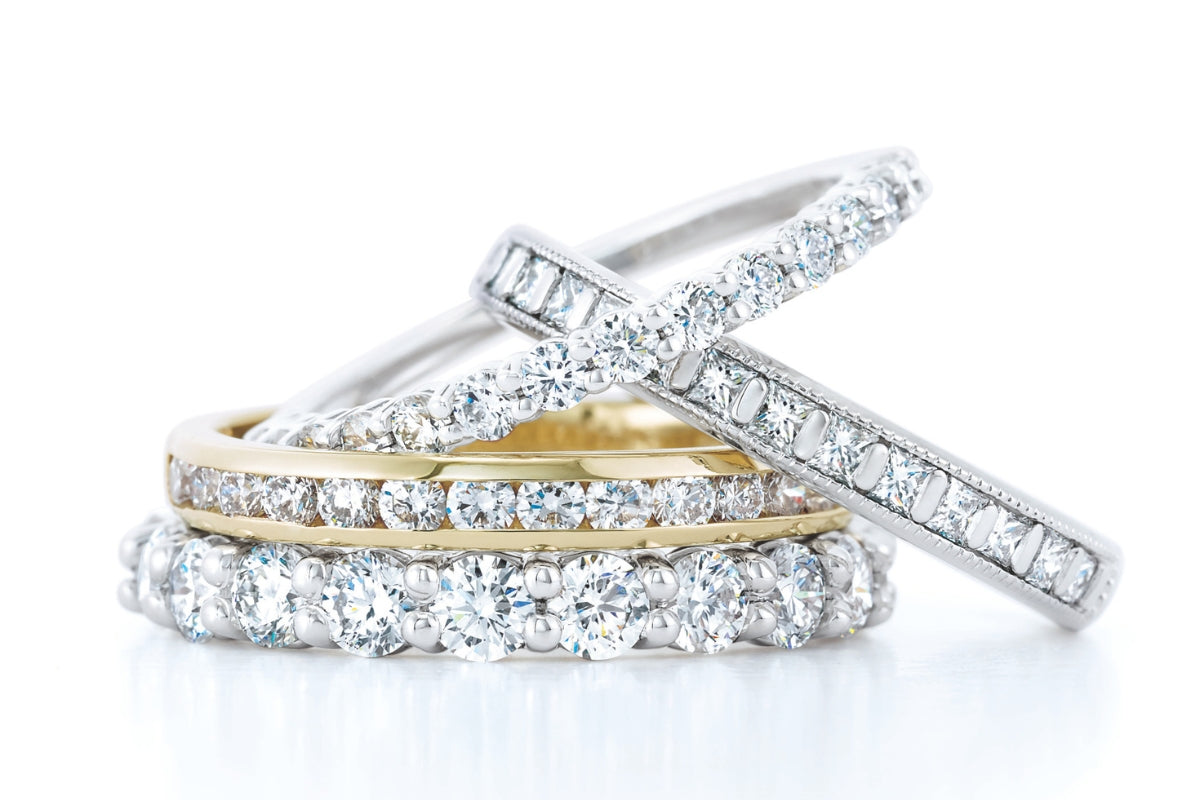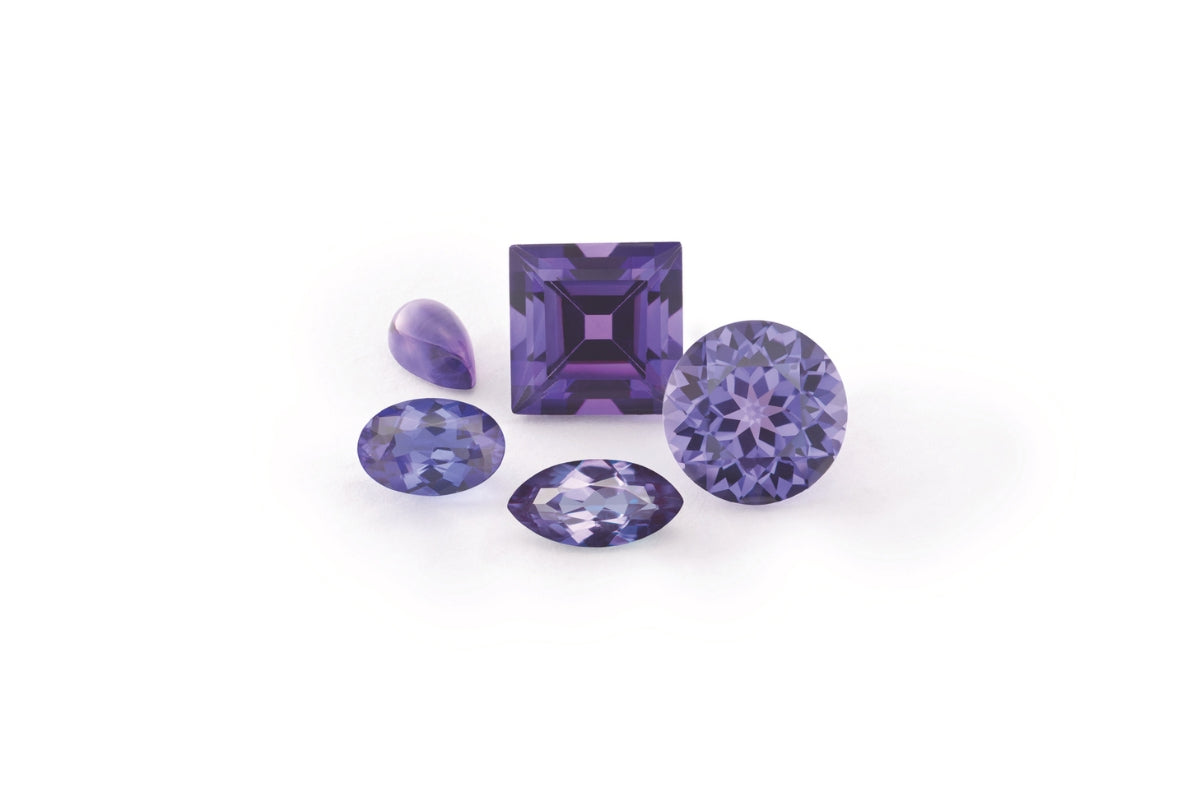Conflict free diamonds have become a buzzword that’s so closely associated with jewelry stores that it almost feels unnatural to refer to mined diamonds as anything but, “conflict free.” Do a Google search or walk into any local retail jewelry store and you’ll likely be bombarded with conflict free written all over sales and marketing collateral. It’s almost as if by removing the words “conflict free” you’re selling actual conflict diamonds. But is there any scientific or Gemological way to diagnostically determine the “conflict free” nature of a mined diamond or colored gemstone? I’ve dived deeper in a previous blog post about reporting a diamonds origin, click here to read more.
In 2003 the Kimberley Process Certification Scheme was created.
What’s the definition of the Kimberley Process Certification Scheme?:
According to the Kimberley Process website:
“The Kimberley Process is an international certification scheme that regulates trade in rough diamonds. It aims to prevent the flow of conflict diamonds, while helping to protect legitimate trade in rough diamonds. The Kimberley Process Certification Scheme (KPCS) outlines the rules that govern the trade in rough diamonds. The KPCS has developed a set of minimum requirements that each participant must meet. The KP is not, strictly speaking, an international organisation: it has no permanent offices or permanent staff. It relies on the contributions – under the principle of ‘burden-sharing' – of participants, supported by industry and civil society observers. Neither can the KP be considered as an international agreement from a legal perspective, as it is implemented through the national legislations of its participants.”
Clearly, this “minimum viable solution” is just that. It’s the least and maybe the best the diamond mining industry can do to protect the integrity of their operations, and therefore protect consumers from “conflict diamonds.” This may have been “good enough” for the parties involved, just enough of a certification in order sleep easier at night. In fact, it’s clearly enough for some of today’s consumers not to lose sleep over. Consumers ask “is it conflict-free”? The answer, “yes, of course it’s certified...”
The Kimberley Process Certification Scheme makes the following very clear:
- “ The KPCS prohibits participants from trading with non-participants. Participants are often referred to as ‘members'.”
Though there may be few formally recognized “non-participants”, rough diamonds have a way of trading hands multiples times. Why? Because before being “recognized” or accounted for in a formal manner, the chain of command is only as strong as the hands it changes during production which includes mining, sorting, processing, cutting, grading, then off to the wholesale market, where stones find their way into retailers possession.
There’s certainly a moral hazard, a financial incentive, and therefore a market for what those in the trade call “non-certified goods” which include diamonds that are either rough or polished and have not been formally certified by either the Kimberley Process or have yet to be certified/graded by a diamond grading laboratory.
That the Kimberley Process does not actually certify any specific business, wholesaler, manufacturer, diamond grading laboratory, or even a jewelry retailer. They suggest that retailers only purchase from suppliers that can “guarantee” that their diamonds are so called “conflict-free.” We’ll touch on this “guarantee” below, but it’s only as good as the word of the last “hand” that sourced the diamond.
‘System of Warranties’:
Based on my years in the industry and according to the Kimberley Process website, I have seen a variation of the following ‘system of warranties’:
“In order to strengthen the credibility of the agreement, the industry body, the World Diamond Council proposed that the industry create and implement a ‘System of Warranties' for diamonds. Under this system, which has been endorsed by all Kimberley Process participants, buyers and sellers of both rough and polished diamonds must make the following statement on all invoices:
"The diamonds herein invoiced have been purchased from legitimate sources not involved in funding conflict and in compliance with United Nations resolutions. The seller hereby guarantees that these diamonds are conflict free, based on personal knowledge and/or written guarantees provided by the supplier of these diamonds."
Not convinced that the jewelry industry moves slow? Well, here’s more proof that this sort of “handshake” statement is quite literally the fallback between trading parties. I’d say it’s more of a so called “wiping my hands clean” type of statement that simply isn’t good enough. In fact, when you walk into a brick-and-mortar jewelry store and ask the salesperson if their diamonds are conflict free, this is what they’re referring to when they say “yes, it is conflict-free.” It’s conflict free based on their knowledge...from a statement written on their invoice. Nothing more.
What is the difference between Kimberley Process “participants” and “observers”?
According to the Kimberley Process website:
“Participants in the Kimberley Process (KP) are states or regional economic integration organisations (currently the European Community) that have met the minimum requirements of the Kimberley Process Certification Scheme (KPCS) and are, therefore, eligible to trade in rough diamonds with one another. The KPCS prohibits participants from trading with non-participants. Participants are often referred to as ‘members'. Observers are industry and civil society groups involved in the KP. These groups monitor the effectiveness of the certification scheme, and provide technical and administrative expertise. There are currently four main Kimberley Process observers: the World Diamond Council (WDC), representing industry, the Civil Society Coalition (CSC), Diamond Development Initiative (DDI) and the African Diamond Producers Association (ADPA).”
You may be wondering what role the major international Diamond Grading Laboratories like International Gemological Institute (IGI),Gem Certification & Assurance Lab (GCAL), & theGemological Institute of America (GIA) have. It may surprise you, but the three major international diamond grading laboratories don’t get involved in the Kimberley Process Certification Scheme. Why? Because, they specialize in grading the 4Cs of diamonds. This means that the diamonds are already cut and polished before entering the diamond grading laboratories. To date, there is no test or way to figure out the diamonds origin.
Something I found interesting was on the Kimberley Process website’s FAQ’s, where one of the questions is asking:
“What can I, as a consumer, do?”
Answer:
“Ultimately, the success of the Kimberley Process is in the hands of consumers. We appreciate your effort to make sure that you are buying certified diamonds. The KP does not certify individual jewellers. However, a reputable business should be able to answer the following questions: How can I be sure your jewellery does not contain conflict diamonds? Do your diamond suppliers participate in the industry's ‘System of Warranties'*? Can I see a copy of your company's policy on conflict diamonds? *The diamond industry has set up a 'System of Warranties' that complements, but is distinct from, the Kimberley Process. Find out more about the System of Warranties.”
Their response is deflecting. I understand that consumers drive demand and that their interest should be best served by those in the jewelry retail world. But to say that the ultimate success of the Kimberley Process is up to you, the consumer. Really? Isn’t that just a transfer of responsibility? As the consumer, I want and expect transparency and to know that who I’m buying from (and who they source from) are reasonable, responsible, and morally and ethically sound business people. I wouldn’t expect this sort of reverse psychology to be a part of the Kimberley Process Certification Scheme.
From a retail perspective, I would expect the Kimberley Process to put the pressure on everyone involved in diamond mining, processing, cutting, and selling both on the wholesale and retail level. If the Kimberley Process thinks that ultimate success is up to you, the consumer, then as a retailer, I would argue it’s actually up to the jewelry retailers. As a fine jewelry retailer, we are the last line of defense to combat conflict diamonds. And guess what, most, if not all retail jewelers turn a blind eye to the origins of their product. As jewelry retailers, we need to do a better job of placing and equal amount of pressure upstream on wholesalers, cutters, processors, and mining companies as well. The ultimate stance against conflict diamonds would be to not carry or sell the mined diamonds shrouded with unidentified origins.
Rough diamonds and colored gemstones are still being mined by over 1 million children and are still panned and mined for in various ways by soldiers, local artisanal miners, and smugglers. These mining practices production output are then illegally exported to neighboring countries and therefore undetected by the Kimberley Process. How? By way of being mixed in with rough diamonds from legitimate sources, which then are sold, cut/polished and find their way onto the market and into your local jewelry store.
Wouldn’t you expect the Kimberley Process to have a “zero tolerance” mentality towards diamond mining practices? It seems as though it’s easy to turn a blind eye to especially the further downstream you go from the source of the diamond mining. Nobody wants to jeopardize their precious diamonds resalability, so it’s in everyone's best interest to adhere at least to the idea of the being “Conflict Free” which means in some capacity, adhering to the Kimberley Process and stating their version of the ‘system of warranties’ on invoices.
By the way, this is all for rough diamonds and does not include the finished product, which is a cut and polished diamond and either sold loose or set in finished jewelry.
In the relative short history of diamond mining, it’s not uncommon for diamond mining companies to stockpile rough diamonds in secured vaults, only to release and control supply and therefore retain integrity of prices on the wholesale and retail level. The point is, not even to its own fault, the Kimberley Process fails to protect consumers from diamonds that were previously mined. There’s no way to tell when a specific rough or cut and polished diamond was mined for or how long it was stored after it was mined. This means that a diamond which was previously mined for in a rough form from anytime before 2003, even 100+ years ago, could still slowly find their way onto the market, circumventing the Kimberley Process and assurances altogether.
To learn more about what the Kimberley Process Certification Scheme is, please clickhere.



